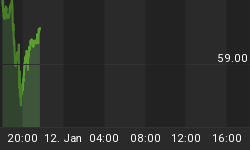Currency traders have an infatuation with interest rate differentials. Under the prevailing assumption, currencies issued by countries with high interest rates ought to appreciate against currencies issued by countries with low interest rates. This follows the logic of the carry trade, where the currency procured at low rates is exchanged for the currency deployed at high rates. While this temporarily stimulates demand for the high rate currency, it creates an open short position that only accentuates the fundamentally superior value of the low rate currency. This value rests on the axiom that interest rates and credit risk are inversely related. The market assigns rates in line with this axiom, granting the lowest rate to the debt denominated in the most creditworthy currency. Trading against this axiom amounts to trading against the secular trend and runs the risk of being caught flatfooted by sudden realignments of currency value and credit risk.
The carry trade has developed largely because real interest rate differentials are determined on false grounds. The nominal interest rate differential between Japan and the US, for example, is 450bps based on their respective overnight lending rates (zero for Japan vs. 4.5% for the US). The real interest rate differential is 250bps in favor of the US when derived by subtracting government estimated CPI rates (0.5% for Japan vs. 2.5% for the US). Borrowing in Japan to lend in the US appears rational and profitable.
CPI rates, however, are not an effective proxy for inflation, which is the rate at which the total supply of money and credit in an economy is growing. By this measure, real interest rates are negative in both countries: minus 1.5% in Japan (zero interest less 1.5% inflation) and minus 4.0% in the US (4.5% less 8.5% inflation). The real interest rate differential is 250bps in favor of Japan. The spread widens to 400bps in favor of Japan based on the interest rates of their respective 10-year notes (1.6% for Japan vs. 4.6% for the US). Borrowing in Japan to lend in the US, therefore, is actually irrational and highly unlikely to be profitable when positions are closed.
The real interest rate differential between Japan and the US based on money and credit growth, the proper definition of inflation, is consistent with the order of nominal interest rates assigned by the debt market, which also favors Japan. Interest rates on Japanese debt are lower than interest rates on American debt; rates for Swiss and Eurozone debt lie in between. There is only one currency that can be borrowed at an interest rate lower than the yen: gold, whose rate of interest, euphemistically called the leasing rate, is only marginally above zero along the entire rate curve. This interest rate order is also congruent with rates of appreciation against the dollar since currency exchange rates were floated in 1971, with gold rising the most followed by the yen.
The large buildup of an open short position adds to the yen's appeal as the currency with the lowest nominal interest rate among irredeemable fiat monies and Japan's status as the world's largest creditor state. The eventual covering of this position will temporarily exaggerate the yen's appreciation against the dollar, with the trigger as likely to be a change in risk premiums demanded on US debt as a narrowing of the nominal interest rate differential between the two countries. Risk premiums fluctuate according to perceived credit risk. If investors become concerned over the creditworthiness of US debt issuers, they will demand higher rates, pushing down bond values. The borrowed yen has been used to buy US bonds, and a significant loss of their market value would induce owners to sell and repay outstanding yen loans. Consequently, a devaluation of the dollar against the yen could, in fact, occur in tandem with a widening of the nominal interest rate differential between Japan and the US. Currency traders gawking exclusively at rate spreads wouldn't even see what hit them.
















